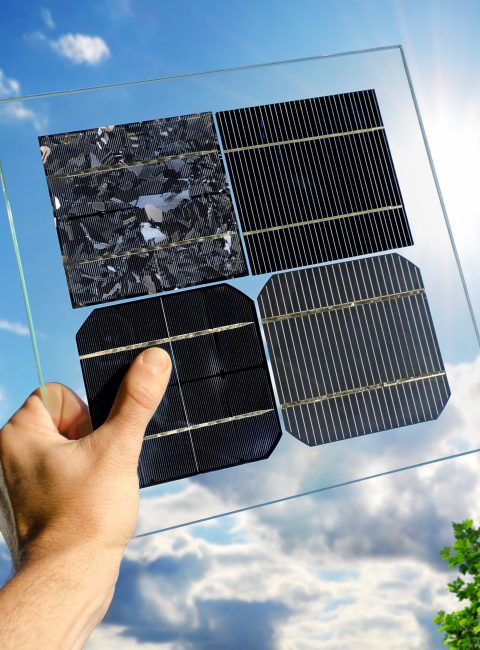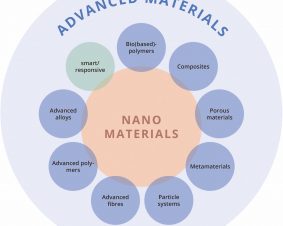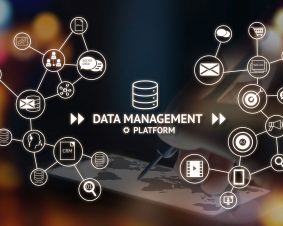 >
Spotlight March 2023: How can photovoltaics be made safe and sustainable?
>
Spotlight March 2023: How can photovoltaics be made safe and sustainable?
Conventional photovoltaic systems often have only low efficiency, i.e. only a fraction of the solar energy is converted into electrical energy and made usable. For this reason, research is being conducted into innovative materials that can significantly increase the energy yield and thus also enable more electrical energy to be generated from renewable sources. However, most of these materials contain toxic heavy metals, such as lead perovskite materials (material text perovskites) or lead quantum dots.
The review article addresses the question of how these novel photovoltaic materials can be made more sustainable in the future (basic text sustainability). For this purpose, in addition to the release scenarios of lead from solar cells due to environmental influences, their toxicity for humans and the environment is also considered, and avoidance strategies are shown that can effectively prevent the release of lead. These consist, for example, of reducing the lead content in photovoltaic modules or replacing lead with other, less critical elements (e.g. tin). There is also the possibility of coating solar cells or encapsulating the lead-containing components and thus protecting them from the effects of wind, rain and heat. Additives can also be used for stabilization (e.g. fullerenes). This can effectively prevent the release of lead into the environment.
Finally, recycling processes are summarized that allow the lead to be recovered and reused in new products. These processes can have tremendous environmental and economic benefits, as the release of lead into the environment from waste is prevented, and the reuse of the lead for new products is sustainable in the circular economy sense. It is clear at this point that many of the recycling processes presented rely on the use of large amounts of various solvents, which is also critical. The authors state that more research is needed for effective and sustainable recycling and suggest that recycling costs should be included for an economic consideration of lead-containing solar materials.
This article provides a comprehensive review of how higher efficiency ,but with critical heavy metals, solar materials needed for the energy transition could be made more sustainable, and the authors outline future research is needed on these materials, which are still in development.
Original-Publication:
Xingwen Lu, Dong Yan, Jiangtao Feng, Meng Li, Bo Hou, Zhe Li, Fei Wang
Ecotoxicity and Sustainability of Emerging Pb-Based Photovoltaics. Sol. RRL 2022, 6, 2200699

Weitere Spotlights
Spotlight June 2022: From small to clever – What does the future hold for the safety and sustainability of advanced materials?
The smallest particles in materials research, nanoparticles, have occupied us intensively for more than 20 years to elucidate and further investigate their safety for humans and the environment. Now, however, the development is going from “small = nano” to “clever = advanced”, as discussed in a contribution by international scientists. Thereby, it is a great […]
Read moreSpotlight November 2020: Nanotechnology in the public perception
In November, we would like to draw your attention to a publication that examines public perception of the safety of nanomaterials in Austria.It shows, that although there is generally a rather positive attitude towards nanomaterials, there are different opinions on safety issues from different social groups. Further clarification seems necessary. Despite the widespread use of […]
Read moreSpotlight August 2023: From principles to reality. FAIR implementation in the nanosafety community
In the August 2023 Spotlight, we present a paper that addresses the implementation of FAIR (Findability, Accessibility, Interoperability and Reusability) Data in nanosafety research. The authors introduce the new AdvancedNano GO FAIR Implementation Network (see also https://www.go-fair.org/implementation-networks/overview/advancednano/) established as part of the GO FAIR initiative. The paper highlights the AdvancedNano GO FAIR Implementation Network’s support […]
Read moreSpotlight August 2021: Towards FAIR nanosafety data
In August we would like to present a paper on FAIR data. The paper published in Nature Nanotechnology in June 2021 summarises the challenges and provides recommendations for the efficient reuse of nanosafety data in line with the recently established FAIR guiding principles: findable, accessible, interoperable and reusable. This article summarises the know-how on the […]
Read more


